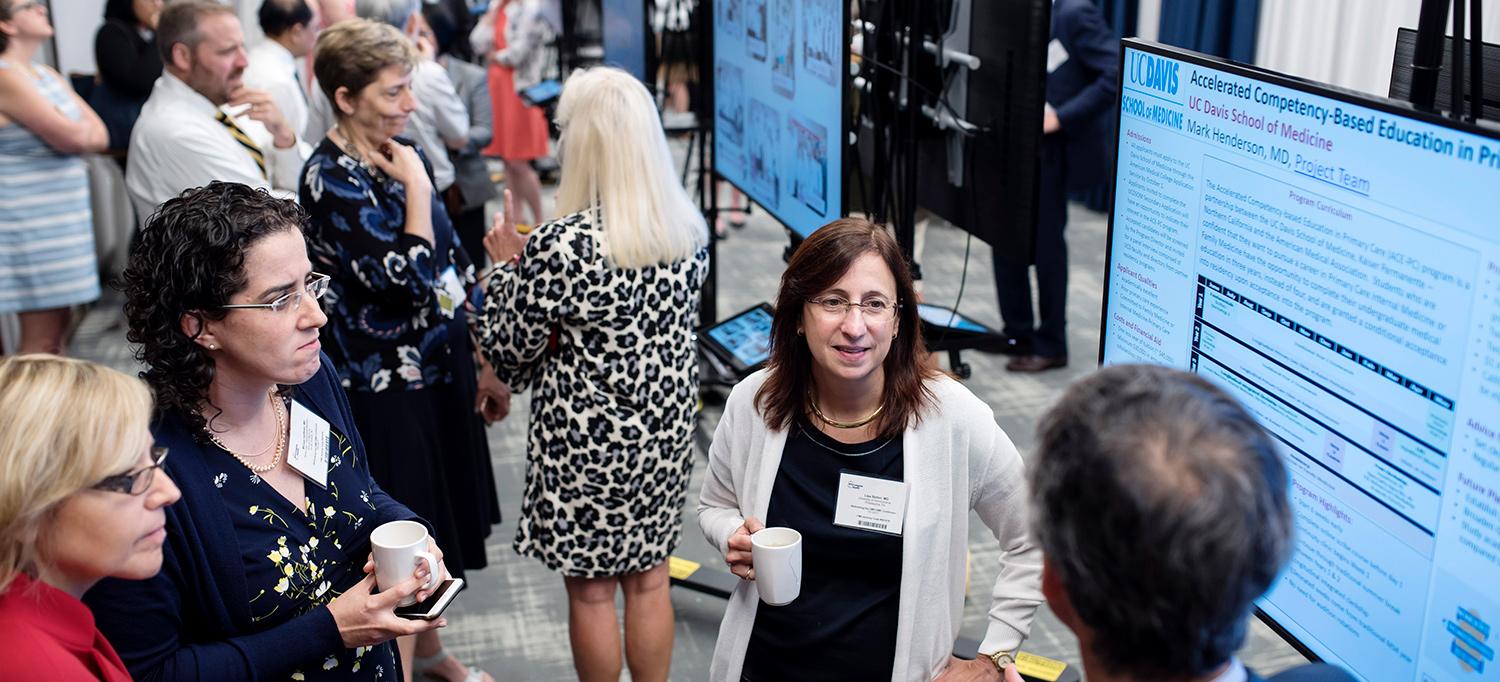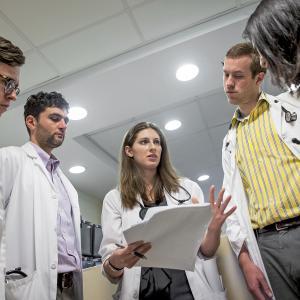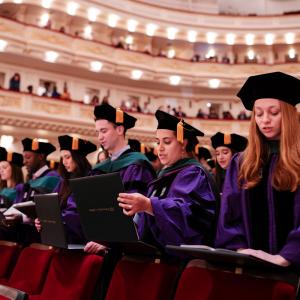
Attendees browse a poster session at "Rethinking the UME-GME Consortium," a conference hosted last July by NYU School of Medicine and the Consortium of Accelerated Medical Pathway Programs. The conference convened more than 50 deans and other leaders from medical schools nationwide.
Photo: Karsten Moran
Few experiences are more stressful in the life of a doctor than making the leap from medical school to residency. “Right now, the model is that you finish medical school, and even though your education continues, there is no coherent transition to residency,” says Steven B. Abramson, MD, vice dean for education, faculty, and academic affairs, and chair of the Department of Medicine. “The freshly minted graduate essentially starts all over again, with little attention to building upon that individual’s particular knowledge and skills.”
Can medical schools make that transition easier? What is the transition to residency like for accelerated learners? And how do we know that we have trained the best doctors possible, whether they have completed three or four years of medical school? These questions were front-and-center at “Rethinking the UME–GME Continuum,” a conference hosted last July by NYU School of Medicine and the Consortium of Accelerated Medical Pathway Programs, convening more than 50 deans and other leaders from medical schools nationally and internationally.
“We’ve spent several years looking at acceleration and how to improve and enhance it,” Dr. Abramson told attendees. “And one of the challenges we encounter over and over is the gap between medical school and residency.” Far too often, he says, undergraduate medical education and graduate medical education, which set standards of competencies, appear to be speaking different languages.
To bridge that gap, guest speaker Susan E. Skochelak, MD, group vice president of medical education at the American Medical Association, issued a challenge to her fellow medical educators: “We must experiment, collaborate, innovate, and invest in faculty, data, and new platforms,” she said. “And we need a uniform language around competency.”
Eric Holmboe, MD, senior vice president for milestones, development, and evaluation at the Accreditation Council for Graduate Medical Education, tackled another pain point: resident transitions.
In a study called “Lost in Transition: The Experience of Impact of Frequent Changes in the Learning Environment,” which Dr. Holmboe and colleagues published in the Journal of the Academy of Medicine, focus groups of residents, nurses, faculty, and ward staff revealed an extremely low level of faculty involvement in supporting residents through transitions. Faculty, it reported, mostly considered rotations “rites of passage.” Dr. Holmboe noted that as educators think about these types of rotations, there is an imperative to always remember the patient. “We need to ask ourselves if we’re preparing people sufficiently to deal with transitions in ways that are safe for patients—making sure they are getting the best care as our learners progress and develop professionally,” he said.
Will medical education ever be evidence-based? That question was core to the keynote address by Louis Pangaro, MD, professor and chair of medicine at the Uniformed Services University. His answer: Yes, with the caveat that evidence-based medical training demands the aggregation of more actual evidence than has been required until now. Evidence-based medicine and medical education have a social function, Dr. Pangaro explained. It’s not simply an intellectual construct. “Evidence allows understanding, and understanding based on evidence has implications as we move from theory to practice, where we make decisions for patients and for society,” Dr. Pangaro said.
Regarding evaluations of students, he noted: “If we can’t evaluate with consistency, transparency, and fairness, then there is no such thing as professionalism as a concept in our schools. It’s all nonsense. Evaluation, and how we turn values into curriculum and assessments is professionalism. The heart of the word ‘evaluation’ is ‘value.’ We’re saying we can make truthful observations—whether we’re taking care of a patient with diabetes or working with a resident.”

